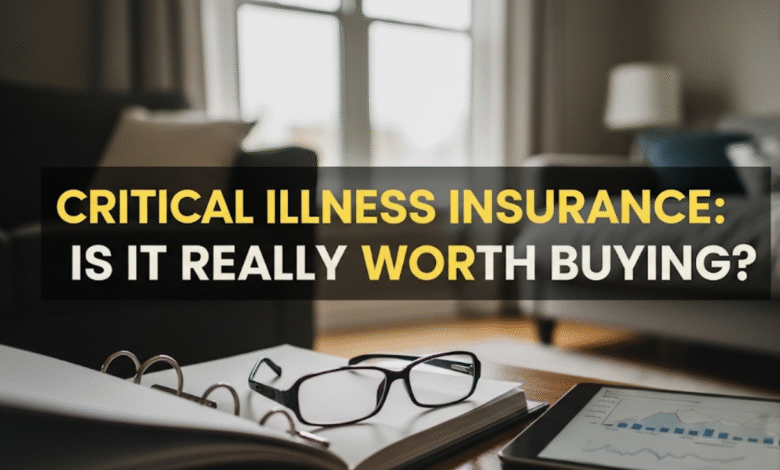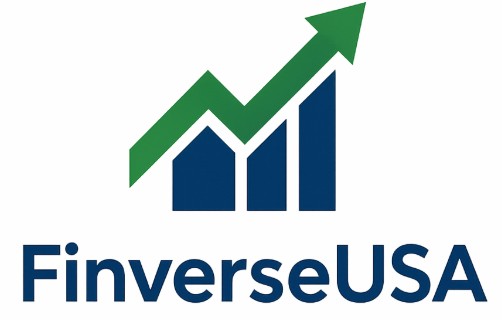
When you receive a curveball like a serious health diagnosis, you don’t want to be left worrying about money. For millions of Americans, though, a diagnosis of critical illness doesn’t just mean physical and emotional battle, but financial ruin, as well. This is where critical illness insurance comes in to play — but is it really worth your cash?
We’ll discuss everything you need to know about critical illness insurance in this extensive guide, from what it is to how it works to whether or not it makes sense for you in your particular circumstances. By the time we’re done here, you’ll have everything you need to know to make a decision about this not-so-popular form of insurance.
So Just What Is Critical Illness Insurance Then?
Critical illness insurance is a type of coverage that gives you a big cash benefit if you’re diagnosed with a severe condition covered by your policy. Unlike most traditional health insurance, which pays the doctor, hospital or others providing care, critical illness insurance pays you (or your designee) a lump sum cash benefit directly.
The money can be used for things like medical expenses not covered by your regular health insurance, to replace lost income while you can’t work, to pay for experimental treatments, or even to defray the sorts of everyday expenses that you can’t stop just because you have cancer, like your mortgage or groceries. It is there to offer you some financial breathing space when you need it, and to enable you to take a step back and get things under control.
How Does It Actually Work?
Here is the basic breakdown: You pay a monthly or yearly premium to keep your policy active. When you’re diagnosed with a covered illness, you submit a claim to your insurance company. Once they confirm your diagnosis satisfies their criteria, they mail you a check for the full face value of the policy — which can be anywhere from $10,000 to $500,000 or more.
The magic phrase here is ‘covered illness.’ The most common conditions covered include heart attack, stroke, cancer, kidney failure and organ transplants. Some more recent policies have broadened eligibility to include conditions like Alzheimer’s disease, Parkinson’s disease and even severe burns.
The Real Costs: What You’ll Really Pay
The cost for critical illness insurance can vary widely depending on a variety of factors, but here are some examples to consider to help give you an idea of how much you might pay.
Example Monthly Premiums by Age and Coverage Limits
| Age Group | $25,000 Coverage | $50,000 Coverage | $100,000 Coverage |
|---|---|---|---|
| 25-35 | $15-$25 | $25-$45 | $50-$85 |
| 35-45 | $25-$40 | $45-$75 | $85-$140 |
| 45-55 | $45-$75 | $85-$140 | $160-$280 |
| 55-65 | $85-$150 | $160-$280 | $320-$550 |
Note: These are approximate ranges of levels for non-smokers in good health. Your exact rates could be much higher or lower depending on factors like your health, lifestyle, and the insurer.
Factors That Affect Your Premium
There are a few key inputs to how much you’ll pay:
Your Age: The older you are, the more expensive coverage gets. That’s why many financial planners suggest getting critical illness insurance when you are young and healthy.
Your Health: Pre-existing health issues may raise your rates significantly or make you ineligible for coverage.
If you smoke: Smokers pay 50% to 100% more than nonsmokers.
Coverage Amount: Increased coverage equals increased premiums, but not always on a 1-to-1 cost basis.
Type of Policy: Term (coverage for a set period) is less expensive than permanent (which covers you your whole life).
The Big Question: When Is It Warranted?
Not everyone should have critical illness insurance, but it can serve as a financial lifesaver in some cases. Let’s take a closer look at when that might — and might not — make sense.
You’re the Perfect Candidate If…
You Have Dependents Who Depend on Your Income: If your family would suffer financially if you were unable to work for several months or a few years, critical illness insurance can provide some of that lost income.
You Have High Deductibles on Your Health Insurance: Even if you have good health insurance, major illnesses often bring a crushing amount of out-of-pocket expenses. These gaps can be filled by critical illness insurance.
You’re Self-Employed or Don’t Have Disability Benefits: Traditional employees often have some coverage through work, but the self-employed usually do not. This gap can be filled with critical illness insurance.
You Have a Family History of Serious Diseases: If cancer, heart disease or other critical diseases are in your bloodline, you may be at higher risk — and therefore potentially more likely to get more value out of this coverage.
You May Want to Skip It If…
You Have a Lot of Emergency Savings: If you’ve already set aside 6-12 months’ worth of costs, plus more for medical emergencies, you might not need this type of insurance.
You’ve Got Good Disability Insurance: A solid long-term disability policy through work may already protect your earnings if illness interferes with your ability to work.
You Can’t Afford Basic Insurance: If you can’t afford health insurance or life insurance yet, focus there first.
The Pros and Cons No One Talks About
The Surprising Benefits
Tax-Free Payout: The one-time payment you receive is generally not taxable for you – not a penny leaves your pocket.
Use the Money Any Way You Need: You get to spend the money however you want – even on a vacation for relaxation and recovery if that is what works for you.
Fast Access to Cash: You can expect most policies to pay up within 30 days of a qualifying diagnosis, providing you with urgent financial assistance.
Coverage for New Treatments: Traditional health insurance doesn’t cover innovative treatments, but critical illness insurance payouts do.
The Frustrating Drawbacks
Restricted Definition of Covered Conditions: Insurance companies are selective about what counts as a qualifying condition. You might think you have one of those covered conditions, only to discover that your particular diagnosis doesn’t match up with their literal criteria.
Survival Period Requirements: Quite a few policies will only pay out if you live for 30 days following the diagnosis. For very aggressive diseases this can be a challenge.
Restricted Claim Frequency: Many policies have a single lifetime payout and in some cases intervals between when you can claim for different things.
Rate Increases: In some plans, insurers can lift premiums even for your whole risk pool, so your “locked in” rate might not be so locked in.
Smart Shopping: Picking the Right Policy
Critical illness insurance policies are not all alike. Some are a better deal than others. So how do you find one that will actually work when you need it?
Essential Features to Look For
Extensive Coverage List: Find policies that cover 20-30 different conditions, including the most popular, such as heart attack, stroke, and cancer.
Partial Payouts: Partial payouts for less severe conditions or for an early-stage diagnosis is a newer policy inclusion, which can be very beneficial.
Return of Premium Options: A few policies will pay you back your premiums if you never make a claim, but they are far more expensive.
Guaranteed Renewable: Protect the policy so the insurer can’t cancel it as long as you make your payments.
Red Flags to Avoid
Definitions That Are Too Restrictive: Some policies define what constitutes a condition in a way that’s virtually impossible to qualify for benefits.
Long Elimination Periods: Stay away from policies that make you wait a great deal of time from diagnosis before it pays you benefits.
Short-Changed by Limited Benefit Triggers: You may think that if a critical illness happens to you and you have insurance covering it, then you will be covered if you need to make a claim.
Real-World Case Studies: What Worked (and What Didn’t)
Success Story: Sarah’s Cancer Diagnosis
Five years ago, Sarah, a 38-year-old marketing manager, took out a $75,000 critical illness policy for $65 per month. When she was diagnosed with breast cancer, her policy issued a check for the full amount within three weeks. She spent $25,000 on an experimental treatment not covered by her health insurance, $30,000 to make up for lost income during treatment and $20,000 for child care/household help afterward.
- Total premiums paid: $3,900
- Total benefit received: $75,000
- Net benefit: $71,100
Disappointment: Mike’s Heart Attack
A construction worker named Mike, 52, believed that having a heart attack meant he’d get critical illness coverage. But his policy called for “substantial permanent damage to heart function,” and his doctors had labelled his heart attack as mild, with full recovery anticipated. One of the covered conditions was a heart attack. Mike got nothing. He didn’t meet the policy’s extremely rigid definition of heart attack.
The Alternative Approaches
Here are some alternatives to critical illness insurance that you may want to think about before deciding whether to take that route.
High-Yield Emergency Fund: Having a generous emergency fund opens up the ability to deal with virtually any emergency that your finances can encounter – not just illness-related ones.
Disability Insurance: Long-term disability insurance is typically a more far-reaching insurance in case you are unable to work due to illness or injury, you can be more covered financially.
Health Savings Account (HSA): Contributing your maximum to an HSA provides tax-advantaged money to use on medical expenses.
Life Insurance with Living Benefits: Some life insurance contracts offer living benefits, meaning that you can receive part of your benefits before dying if you have a terminal illness.

Decide How Much You Want To Give: A Step-by-Step Process
Step 1: Evaluate How Financially Vulnerable You Are
Think about how much you’d need to be able to maintain your lifestyle if you couldn’t work for 6 to 12 months. Include:
- Monthly expenses (mortgage, groceries, utilities)
- Insurance deductibles and co-pays
- Potential experimental treatment costs
- Lost earnings, net of disability benefits (if any)
Step 2: Review Your Current Coverage
Review what you already have:
- Health insurance out-of-pocket maximums
- Employer-provided disability benefits
- Emergency savings
- Other living benefits insurance policies
Step 3: Compare the Math
If the annual premiums on critical illness insurance don’t add up to more than 3-4% of the potential shortfall you calculated in Step 1, this option might be worth looking at.
Step 4: Get Multiple Quotes
Do not accept the first quote you get. Check with at least 3-4 different insurers, as prices and coverage can differ widely.
The Bottom Line: Is Critical Illness Really Worth It?
Critical illness insurance can be a useful safety net, but it is not for everyone. It makes most sense if you have dependents, little savings, high-deductible health insurance or substantial risk factors for a serious illness.
But it should not be your first priority. Before you buy critical illness insurance, you should have:
- Adequate health insurance
- Term life insurance (if you have dependents)
- At least 3-6 months of expenses in an emergency fund
- Good disability insurance, either through work or an outside policy
If you have all these bases covered and still fear the financial repercussions of being seriously ill, critical illness insurance could give you some peace of mind.
And don’t forget, insurance is for transferring risk you can’t afford to bear on your own. If a serious illness would ruin your family’s finances and the premium is affordable for you, this kind of coverage can be a smart investment in your family’s financial protection.
Frequently Asked Questions
Q: Can I buy a critical illness policy if I already have health issues? A: Many companies will still provide coverage for pre-existing conditions, though they may have them be excluded from the plan, or charged at a higher rate. Certain conditions might simply be disqualifiers for you.
Q: What if I’m diagnosed with more than one covered condition at once? A: Most policies will pay the benefit only once, regardless of how many conditions you contract at the same time. But some newer policies pay when you have unrelated conditions diagnosed in separate years.
Q: Do critical illness policies become more expensive over time? A: It varies depending on the type of policy. The rate for level-premium policies remains constant for the term, step-rate increases at pre-set intervals. Some also let the insurer increase the rate for entire risk classes.
Q: Can I use the benefits from critical illness insurance to pay for anything I’d like? A: Yes, that is one of the many benefits. There are no restrictions on how you use the lump sum, as there are with health insurance. Use it to pay medical bills, make up lost income, pay your mortgage or — why not? — take a recovery vacation.
Q: How soon do critical illness insurance policies pay out? A: Most plans pay within 30 days of when you provide adequate documentation of the diagnosis. Some might have waiting periods (also known as elimination periods) which means you have to live for a specific number of days after being diagnosed before benefits kick in.
Q: Can you write off critical illness insurance? A: No, typically not. Premiums paid with after-tax dollars are not deductible on individual policies. But benefits paid out are usually not taxed. If your employer covers the premiums for critical illness insurance, though, those premiums might be deductible to the company but taxable income to you.
Q: What’s the distinction between critical illness insurance and disability insurance? A: Disability insurance is designed to offer monthly payments to replace lost income when you are sick or injured and unable to work because of any illness or injury. With critical illness insurance, you receive a lump sum benefit if you are diagnosed with a serious illness, and it doesn’t matter if you are able to work or not.
Q: Am I able to cancel my critical illness insurance policy at any time? A: Yes, you usually will be able to cancel at any time, but you won’t get the money you have spent in premiums back (unless you have a return-of-premium rider). Remember that if you cancel and later decide you want coverage, you will need to apply again and can face higher rates because of changes in age or health.

